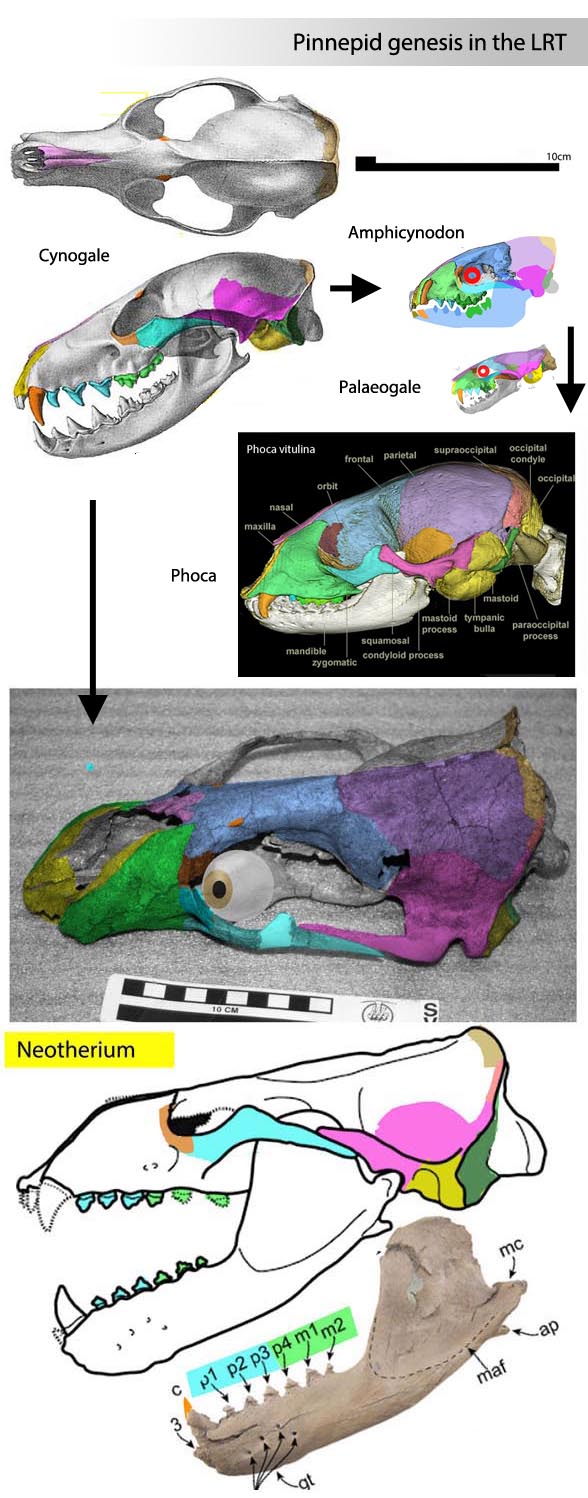According to Wikipedia – Amphicynodon
“Amphicynodon was an extinct genus of caniform carnivore. It has traditionally been considered an early bear, although recent evidence has suggested it may be a unique member linked to other pinnipeds. It was endemic to Europe and Asia during the Oligocene, from approximately 33.9—28.4 Mya and existing for approximately 6 million years. It was similar in size to early mustelids.”
Earlier attempts at nesting Amphicynodon misinterpreted the small area in front of the canine (orange) as the premaxilla, corrected here (Fig 1).

Figure 1. The origin of pinipeds in the LRT now includes Amphicyon, here shown to scale with Cynogale, Phoca, Neotherium and Palaeogale. Phylogenetic miniaturization is present here, once again.
Here in the LRT,
Amphicynodon (Fig 1) now nests basal to seals, smaller than its ancestor, Cynogale (Fig 1), but not as small as its phylogenetic descendant, Palaeogale (Fig 1), the proximal ancestor to seals.
Amphicynodon teilhardi
(Wang, McKenna and Dashzeveg 2005;PST 17/34, early Oligocene) was originally considered a weasel-sized basal bear, but here nests basal to the earless seals. Only a partial skull is available data for scoring.
According to Wikipedia:
“Otariids [= eared sea lions] use their front limbs primarily to propel themselves through the water, while phocids [= earless seals] and walruses use their hind limbs. Otariids and walruses have hind limbs that can be pulled under the body and used as legs on land. By comparison, terrestrial locomotion by phocids is more cumbersome. Otariids have visible external ears, while phocids and walruses lack these.”
References
wiki/Amphicynodon
